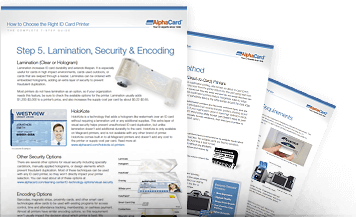What are Photo ID Cards?
Photo identification cards typically contain a photo of the cardholder and other unique information such as name, address, job title, or other data that indicates special authorizations.
One of the most common uses of ID cards is basic photo identification. ID cards are usually made from PVC, and are sometimes covered with an overlaminate to protect information on the card and to increase durability and security. However, photo ID cards serve many purposes, and are necessary in many work and high-security environments where identification is essential to the task at hand. Today’s ID cards range from simple photo IDs right on up to high-tech multifunctional cards.
More complex cards can include a range of technologies such as a barcodes magnetic stripe or smart card encoding to increase card functionality. Adding these elements into the card design allows for integration with access control systems for buildings and computer networks, cashless payment, or time and attendance tracking. Proximity cards or contactless smart cards are embedded with Radio Frequency (RF) technology, which enables them to be read from a distance as a card holder passes by a card reader.
Creating an ID card requires a special printer that can print on durable PVC plastic cards. ID card printers print using a process that either applies resin to the surface of a card, embedding the color through a process called dye sublimation, or prints images, graphics, and text on a special film which is then fused to the card in a process called reverse-transfer printing. The cards may be preprinted with common information such as a company logo, and then fed through the ID card printer to add each cardholder’s unique information. Depending on the type of printer and the features it supports, ID cards can be encoded and security overlaminates can be applied at the same time or in a separate pass.
Are Photo IDs the Right fit for my Organization?
ID cards can be customized to fit the style and needs of any company or organization from different industries, including schools, businesses, government offices, retail stores, libraries, hospitals and clinics, nonprofit organizations, museums, emergency services, and more.
Photo ID cards cater to almost every ID card program due to the amount of information and data that the card can store. In other words, photo identification cards can be customized to your organization’s unique security or identification needs through a wide range of card technologies.
Ready to Learn More About Identification Cards?
Our photo ID experts at AlphaCard have unsurpassed experience in ID card programs spanning all industries. Contact us today to receive a free, in-depth consultation.




